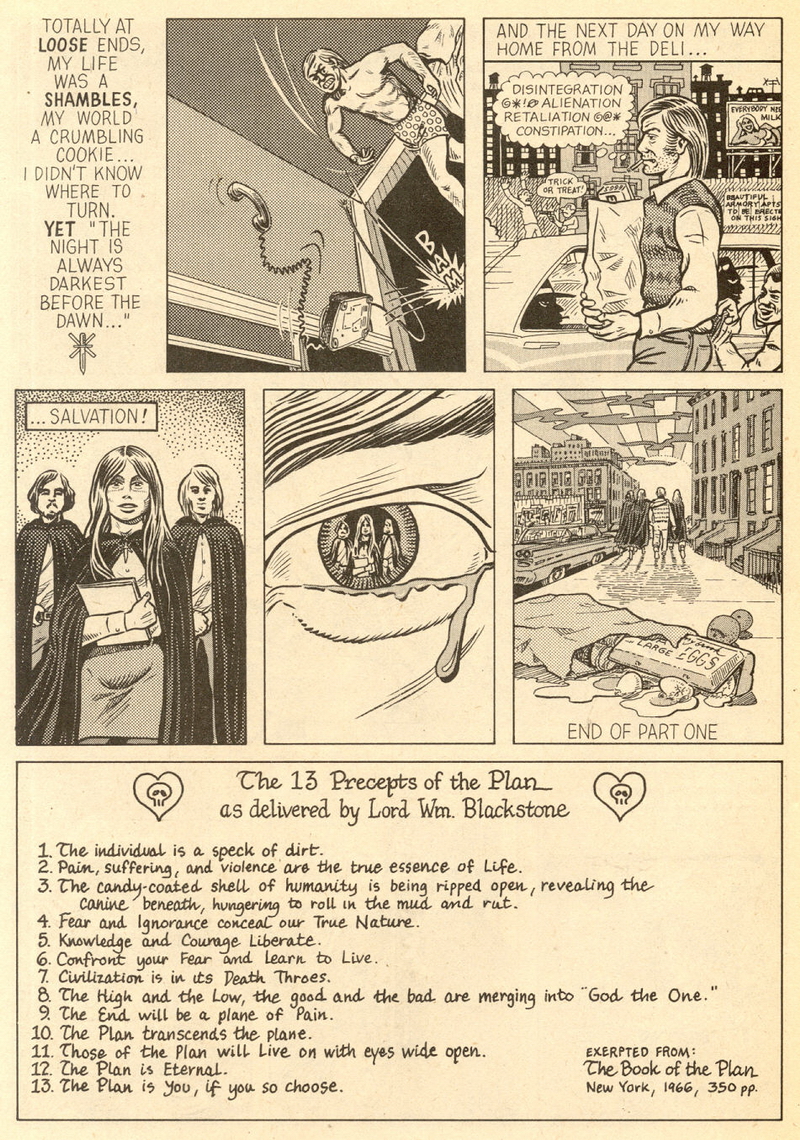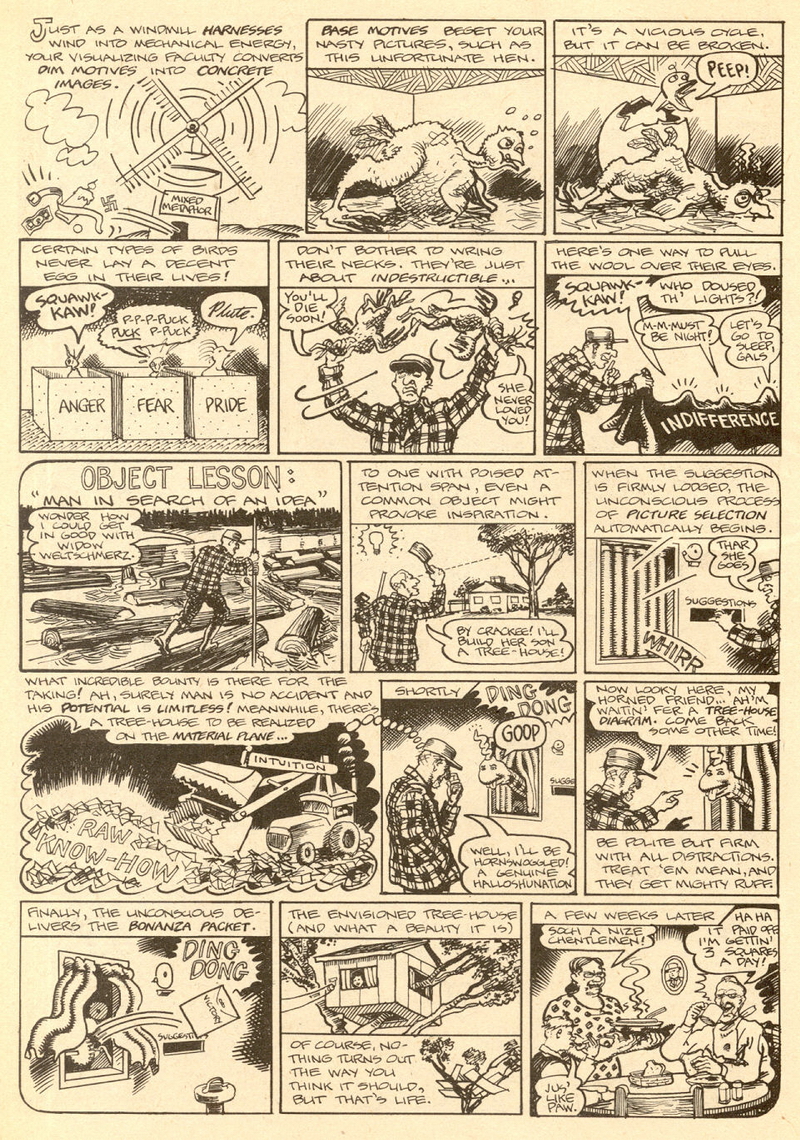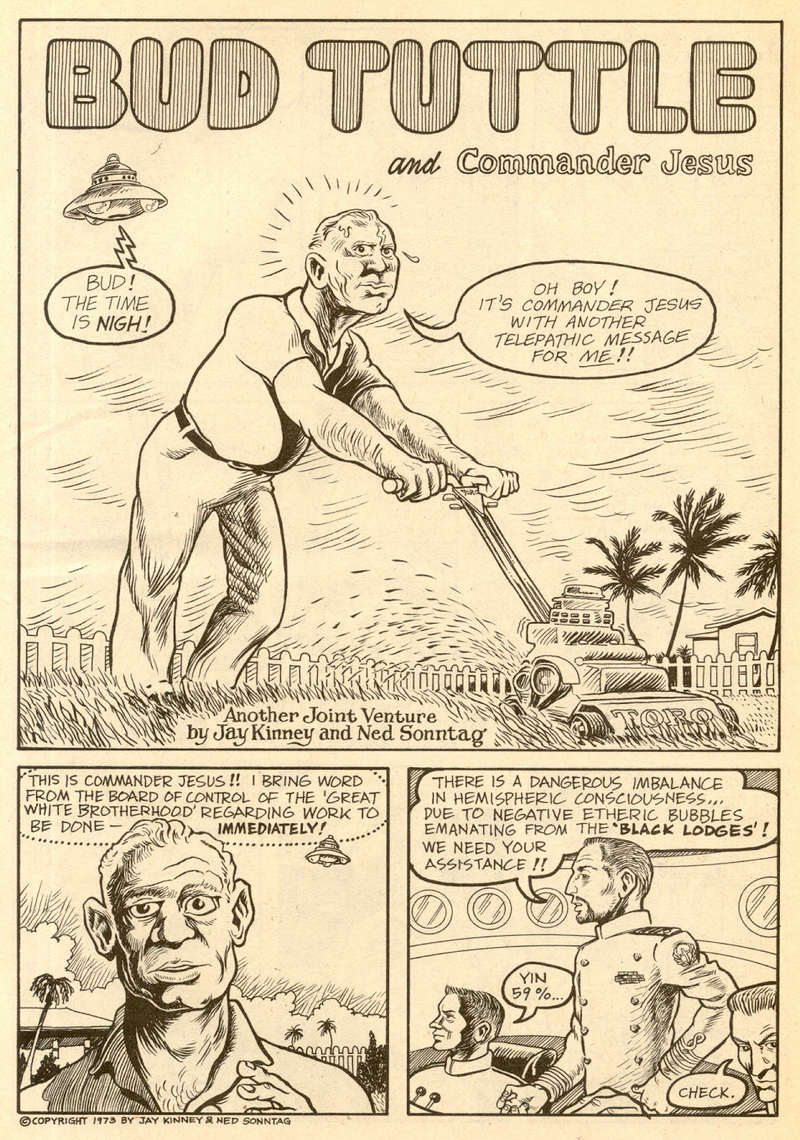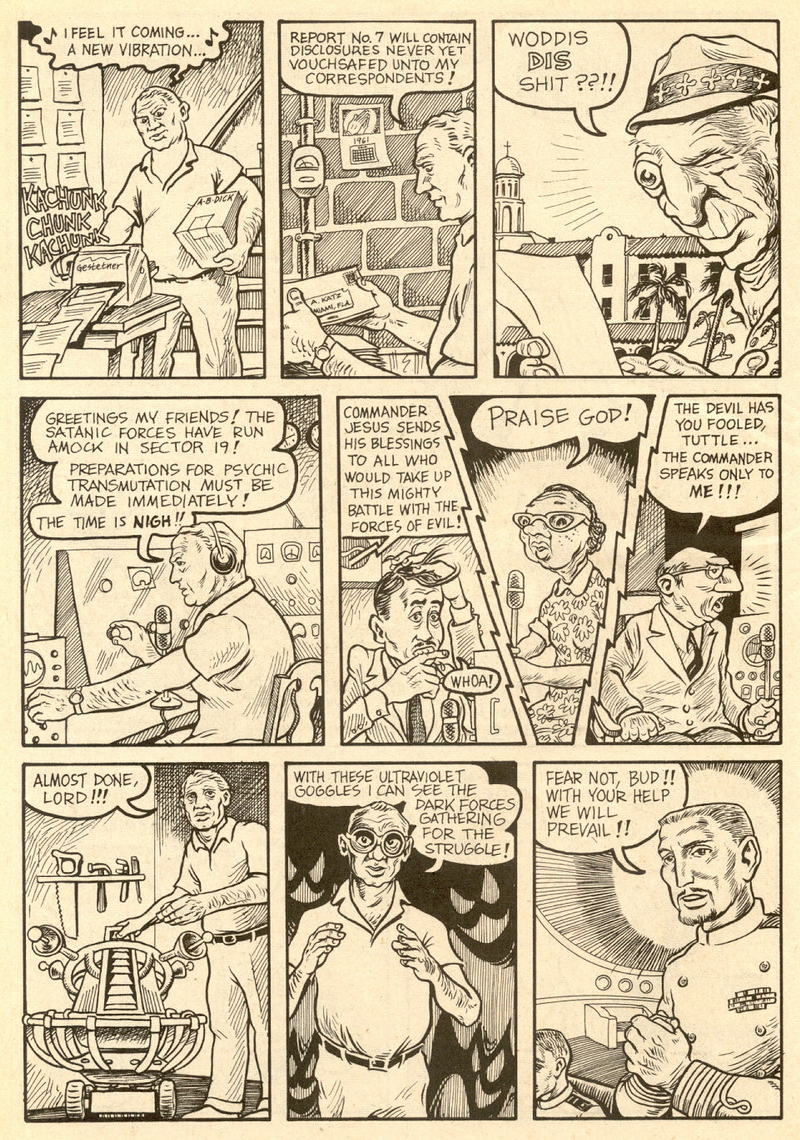occult laff parade

occult laff parade
Print Mint August 1973
Any underground comic book that came along towards the end of 1973 had really bad timing. The Supreme Court decision that established the definition of obscenity was handed down in June of that year. After that landmark ruling, selling “head comix” at your head shop became potentially dangerous not only to your livelihood, but your freedom. There were other factors that led to the demise of the underground comic movement, but the bottom line was that as a commercial venture, it was dying.
While some comics were being delayed or shelved in the summer of ’73, 20,000 copies of Occult Laff-Parade were printed by the Print Mint. Its publication was likely assured because it had a solid roster of comic creators with a history of dependable sales. But imagine the reticence of retailers to sell a book with “occult” in the title, full nudity and erections in the artwork, and an offer to “sell your soul to the devil” on the back cover. You think some communities in these United States might deem such a comic “lacks serious literary, artistic, political, or scientific value”? Occult Laff-Parade is a terrific comic book, but it never had a second printing.
The book was edited by Jay Kinney and leads off with his 11-page tale of cult mind control, “Death is Love,” which is one of Kinney’s all-time best comic stories. The story begins with Bruce, an unhappy ad agency jingle writer, who meets a hot babe named Diana selling religious pamphlets on the streets and becomes intrigued by the cult and the babe. He ends up losing his job and joins the cult, mostly to be near Diana, who is also attracted to him.
When Lord Blackstone, the cult’s pompous leader, drops by the chapter to conduct “rites of devotion,” he decides to test Bruce’s allegiance to the cult. They go into a back room, where Blackstone apparently uses pain as part of the test, which alarms Diana and she interrupts a ritual to see if Bruce is getting hurt. By the time she rushes into the back room, Bruce has already turned the table on Blackstone and pinned him to the floor. This leads to both Bruce and Diana getting kicked out of the cult, but they have learned enough to realize this cult business is a pretty good gig, so they start one of their own!
Other stories in Occult Laff-Parade tackle of a variety of topics related to spirituality, death or the occult, including demons from Hell who get fooled by the man whose life they are trying to snatch, a backwoods bayou moonshiner whose special, ghost-aided recipe is being investigated by a government agency, a magical phone booth that restores sexual libido a little too well, and a visit from Commander Jesus (piloting a flying saucer) to a middle-age man who helps help battle worldwide evil.
Occult Laff-Parade was the first publication edited by Jay Kinney, and it wouldn’t be the last, as he served as editor of Co-Evolution Quarterly in 1983-84 and was both publisher and editor-in-chief of Gnosis magazine, which had a 15-year run at the end of the 20th century. He has written two books, including The Masonic Myth: Unlocking the Truth About the Symbols, the Secret Rites, and the History of Freemasonry. For the last quarter century, Kinney’s professional life has been focused on western esoteric traditions, which includes alchemy, Gnosticism, tarot, astrology, and secret societies.
Of course, Kinney takes his profession seriously, but recognizes the dichotomy of having a background in satirical cartooning with a scholarly interest in the occult and mysticism. In the introduction to Gnosis #32, Kinney wrote that “…pop culture can’t entirely wipe out the voice of the artist engaged in a spiritual journey, although it can make it rather hard to tell the difference between fool’s gold and the real stuff. The best works of pop culture invite the viewer to wrestle with the issues they raise and complete the task of discovery in the individual’s own life. Such works can serve as a pointer or inspiration to further study (or as a chuckle on the way), but they are not a substitute for such study.”
Indeed, Occult Laff-Parade is good for a chuckle but will teach you very little about the subjects it is satirizing. However, any careful study of the comic book provides multiple references that might easily inspire an interested reader into researching fascinating new worlds of mysticism and philosophy.
Jay Kinney (Editor) – 1, 3-13, 14+, 15, 30, 31-35+, 36? • Rick Griffin – 2 • Justin Green – 14+, 27-29, 35+ • Ned Sonntag – 16-17, 31-35+ • Kim Deitch – 18-22, 35+ • Larry S. Todd – 23-25, 35+ • Rory Hayes – 26, 35+
2 – Mud Head • 3 – Death Is Love • 16 – Fingernail Of Fear • 18 – Bayooh Blooze, starring Miles Microft • 23 – Telephone Booth To Nirvana, with Dr. Atomic • 26 – Teddy Meets The Kootcha Bug • 27 – Visualization & Concentration • 30 – Everything You Wanted To Know About Yoga • 31 – Bud Tuttle and Commander Jesus • 35 – Great Moments In Occultism, No. 1 • 36 – Now You Too Can Sell Your Soul To The Devil




































